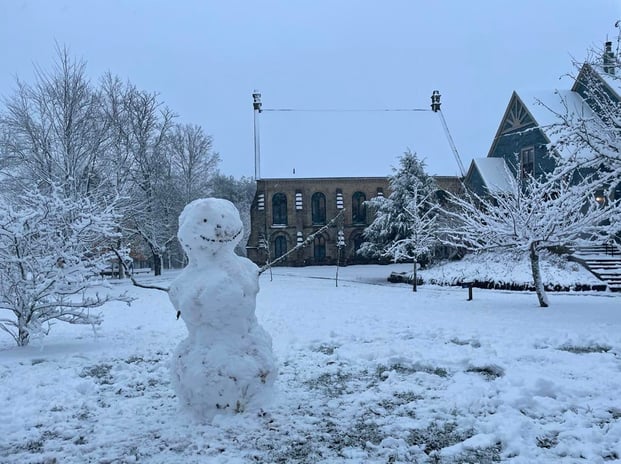

For parents and educators there is tension between keeping children safe and preparing them for life. Building strong and confident children is impossible if we over-protect and coddle them. As life requires us to have good judgement, it is imperative that children are given opportunities to make decisions on their own and to experience the consequences of bad decisions, and the exhilaration of good ones. As parents and educators, we are constantly weighing the benefits of exposing our children to risk.
For example: instead of having a fence around our Tanna Turf we put boulders. They look great, they keep cars out, and they are used for everything from seats for spectators, exercise equipment for jumping and push-ups. Little does anyone know they are not “to code”. To protect the field from cars, the boulders are not placed far apart. Being so close together, children are tempted to jump from one boulder to the other. This leaping from rock to rock carries unacceptable risk for municipalities and public schools and so there is a code which dictates that they must be placed further apart than we would like (the width of a vehicle).
Frankly…I want my students jumping from boulder to boulder. I want them to have to make all the decisions necessary for a safe leap. Are they wearing the right shoes? Are the boulders wet and slippery? Is the rock within their jumping range? Is the surface too uneven? Are there some boulders which they can jump safely and some they cannot? Learning to say no, is just as important as learning to say yes.
So…are snowballs allowed or not allowed?
Most schools disallow snowballs. They are dangerous. Children cannot be trusted to make judgement calls about the texture of snow (cannot be icy or too hard/granular) or their aim (not at the face/eyes) or around buildings (might break a window) etc.
To me…learning how to play safely when one is a child is essential to learning how to act as an adult. On top of that, learning the social rules about how to play boisterously is equally important. Children need to learn to play fairly and not to gang up, to throw more softly to younger children, and to make a snowball fight a game that ends in laughter and inclusion and not in tears and exclusion.
Wednesday this week was magnificently snowy. It was a joyous day made even happier by the reaction of our international students who had not experienced snow before. How wonderful it was to see students change into their bathing suits and run through the storm bare legs and all. (There is nothing like the delicious tingle of snow on skin.) The students soon learned that it was “perfect” for snowballs and snowmen.
As teachers we kept watch and made sure that no one got hurt. The senior students did a good job of this too. Is there risk of harm every time one throws a snowball? Of course. The greater risk, however, is the harm created when opportunities to learn good judgement and social skills are eliminated.
Sincerely,
Joe Seagram
.jpg?width=621&name=HEATHERS%20The%20Musical%20-%20November%202021%20(112).jpg)

Back